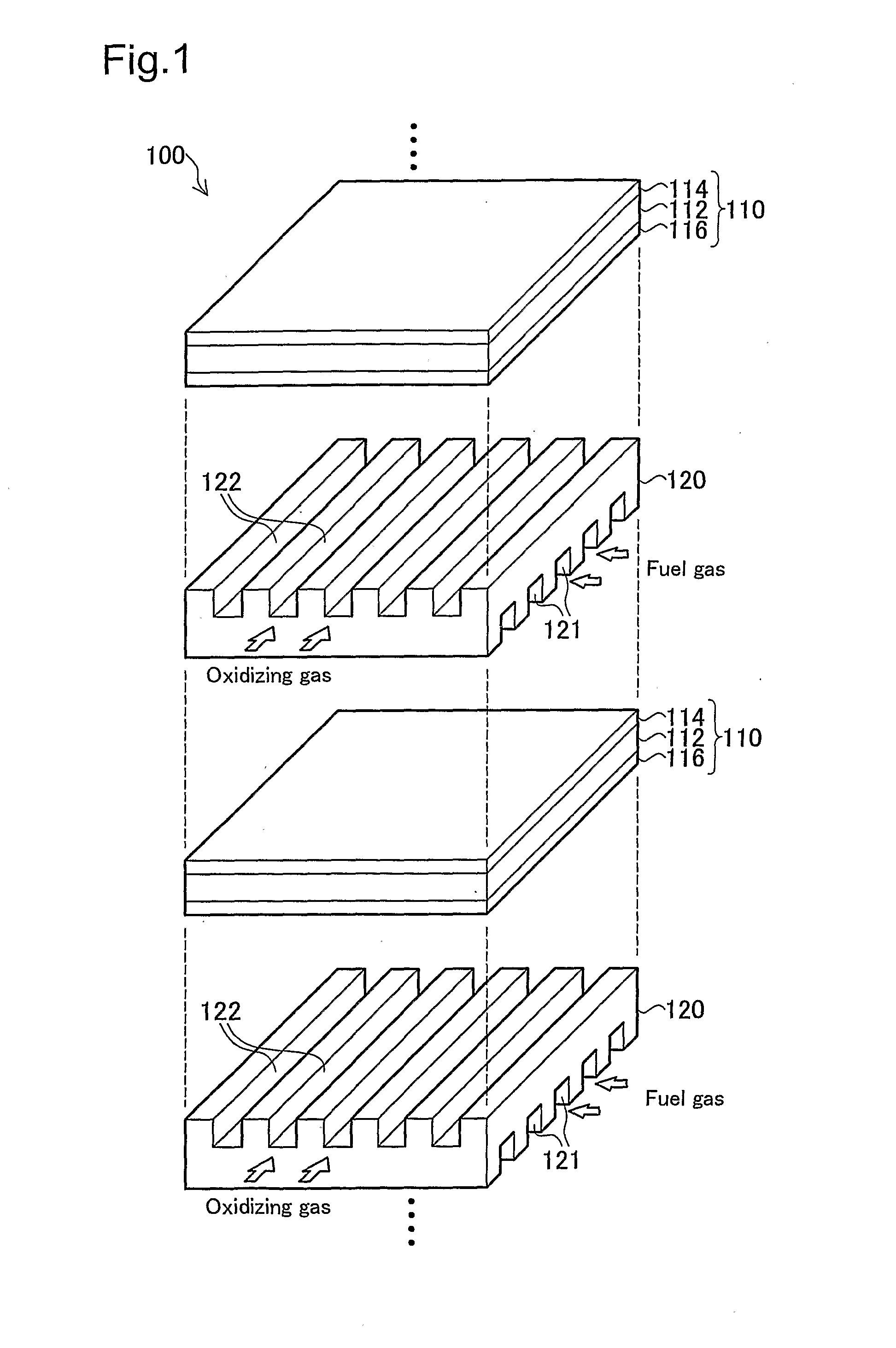Cathode for Fuel Cell and Process of the Same
- Summary
- Abstract
- Description
- Claims
- Application Information
AI Technical Summary
Benefits of technology
Problems solved by technology
Method used
Image
Examples
example 1
[0068] In Example 1, Bi1.5Dy0.5O3 was used as the complex oxide B, La0.5Sr0.5MnO3 was used as the inorganic material A, and Pt was used as the oxygen dissociation-promoting catalyst C. The Bi1.5Dy0.5O3 that was used as the complex oxide B had an oxygen ion conductivity (S / cm) of at least 10−2 in the intermediate temperature range of 300 to 600° C., as shown in FIG. 9.
[0069] As described in the method for producing the cathode 114 above, the oxygen dissociation-promoting catalyst C was first supported on the complex oxide B before being mixed with the inorganic material A. A choroplatinic acid solution was used to support 0.5 wt % Pt on the Bi1.5Dy0.5O3 powder. The platinum support Bil.5Dy0.5O3 and the La0.5Sr0.5MnO3 were mixed in a proportion of 1:1 (vol) using a mortar and pestle, and the mixture was passed through a roll mill, giving a paste. The resulting paste was screen printed on to the electrolytic membrane, and was dried at 90 degrees. The paste was screened and dried at 90...
example 2
[0071] In Example 2, La0.7Sr0.3Ga0.7Fe0.3O3 was used as the complex oxide B, La0.5Sr0.5MnO3 was used as the inorganic material A, and Pt was used as the oxygen dissociation-promoting catalyst C. The La0.7Sr0.3Ga0.7Fe0.3O3 that was used as the complex oxide B had an oxygen ion conductivity (S / cm) of at least 10−2 in the intermediate temperature range of 300 to 600° C., as shown in FIG. 9.
[0072] In Example 2, unlike the method for producing the cathode 114 described above, the complex oxide B and inorganic material were mixed before the support of the oxygen dissociation-promoting catalyst C. The La0.7Sr0.3Ga0.7Fe0.3O3 and La0.5Sr0.5MnO3 were mixed in a proportion of 1:1 (vol) using a mortar and pestle. The resulting mixed powder was dipped in a chloroplatinic acid solution, dried at 80° C., and fired at 500° C. to support 0.5 wt % Pt. The resulting platinum-supporting mixture (A+B+C) was mixed with a binder and solvent, and was passed through a roll mill, giving a paste. The resulti...
PUM
| Property | Measurement | Unit |
|---|---|---|
| Electrical conductivity | aaaaa | aaaaa |
| Temperature | aaaaa | aaaaa |
| Electrical conductivity | aaaaa | aaaaa |
Abstract
Description
Claims
Application Information
 Login to View More
Login to View More - R&D
- Intellectual Property
- Life Sciences
- Materials
- Tech Scout
- Unparalleled Data Quality
- Higher Quality Content
- 60% Fewer Hallucinations
Browse by: Latest US Patents, China's latest patents, Technical Efficacy Thesaurus, Application Domain, Technology Topic, Popular Technical Reports.
© 2025 PatSnap. All rights reserved.Legal|Privacy policy|Modern Slavery Act Transparency Statement|Sitemap|About US| Contact US: help@patsnap.com



